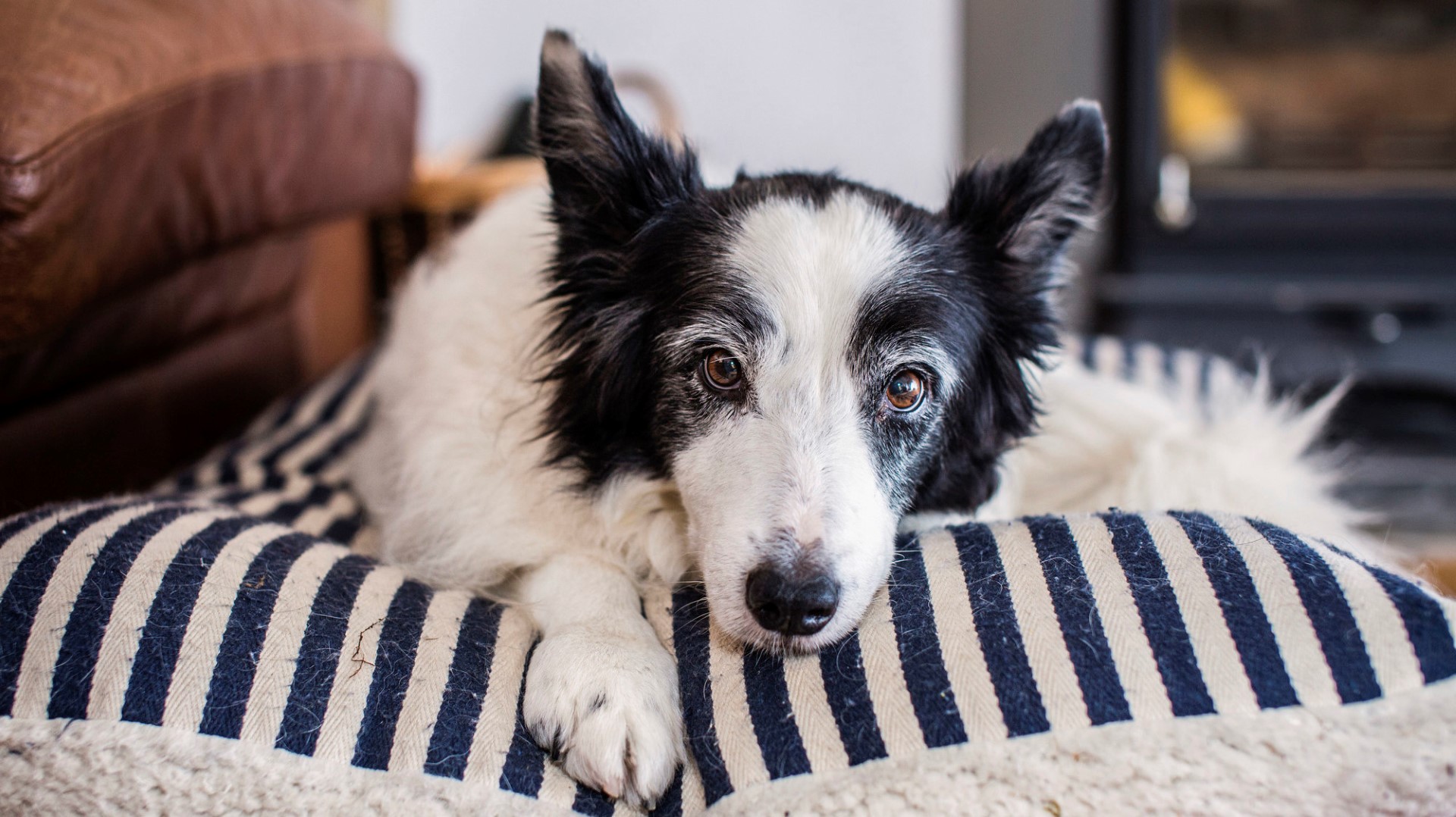
Arthritis in dogs
Arthritis is most common in older dogs, but can affect dogs at any stage in their life.
What is arthritis?
Arthritis is a condition which causes inflammation in the joints, making movement painful and difficult. Osteoarthritis, also known as degenerative joint disease, is the term used to describe the progressive deterioration of the joints as a result of the inflammation.
What are the signs and symptoms of arthritis in dogs?
Arthritis is a progressive disease with symptoms that gradually develop and worsen over time. In the early stages you may notice your dog starting to slow down. They may be reluctant to play, go up the stairs or be less active out on walks. Book your dog in for a vet check-up if you notice a change in your dog's behaviour.
Other symptoms of arthritis include:
- limping or lameness
- a stiff gait, usually worse after exercise and when first waking up
- groaning or caution when laying down or getting back up
- wary of you touching the joints affected
- muscle wasting
- tiredness
- irritability
- licking or chewing on areas that may be painful
What causes arthritis in dogs?
Most commonly, arthritis affects older dogs and is caused by wear and tear on the joints.
But it can also be the result of:
- an injury such as ligament damage or broken bones
- hip dysplasia and elbow dysplasia, which is a genetic condition common in labradors and German shepherds
- certain breeds, such as labradors, retrievers and German shepherds
- abnormalities of joints, caused by too little or too much exercise during puppyhood
How can arthritis be diagnosed?
Your vet may diagnose arthritis based on a history of symptoms. They will usually carry out a physical examination to test for stiffness, pain and/or swelling of the joint.
Where arthritis is suspected in younger dogs, or if there’s a possibility of joint surgery that could be helpful, X-rays or other scans may be done to establish the underlying cause.
Managing arthritis in dogs
There is no cure for arthritis, but the pain can often be managed for some time to maintain your pet's quality of life.
Weight control
Keeping your dog at a healthy body weight is the most important thing you can do to help with their arthritis. Not only is fat more weight to carry around on sore joints, but it also makes inflammation worse. If your dog is overweight, speak to your vet or vet nurse about starting a diet to help them back to their optimal weight.
Exercise moderation
Dogs with arthritis should still have regular exercise. However, this will need to be adjusted depending on their physical abilities. Frequent short walks with some recovery time to rest in between is better than long walks, which may cause too much painful strain on the joints.
Stick to firm flat terrain and low impact exercise such as walking or gentle trotting. Avoid running, chasing balls and turning at speed. Swimming can also be a great low-impact exercise if your dog enjoys it. Massages, physiotherapy and hydrotherapy may also help.
Environmental modification
Providing a soft, comfortable bed will help to take pressure off your dog’s joints when they are resting. You should support them if they need to climb stairs, get on and off the sofa or beds, or into the car – using a ramp where possible can be a big help. If you have slippery flooring such as wood or lino, consider putting mats or rugs down to give your dog more grip.
Medical treatment
Your vet may prescribe anti-inflammatories and/or painkillers to relieve some of your dog's pain and improve mobility. These medications can come in the form of daily tablets or liquids that are given with food, or an injection which is given monthly by your vet. Some vets may also discuss joint supplements or special diets that may be beneficial for your dog.
Surgical treatment
Surgery is not beneficial to most arthritic pets, but may be advised in particular cases. New therapies, such as stem cell therapy, are also becoming more available for dogs and some seem to yield promising results.
Can arthritis be prevented?
Age-related arthritis cannot be prevented, but you can do a number of things to help reduce the risk and delay the onset and severity of symptoms. Keeping your dog at a healthy weight alongside regular exercise is advised.
The risk of hip dysplasia, which can cause arthritis, can be reduced by good breeding practices including the hip and elbow scoring of potential parents. The hips and elbows are X-rayed. These X-rays are sent by your vet to be assessed by a panel of experts and given a score.
While the average hip and elbow score can vary between breeds, it's recommended to only breed dogs with scores below average.
What is the prognosis for dogs with arthritis?
This will vary greatly between cases. But with careful management, it’s possible for affected dogs to have a good quality of life for some time. However, owners will need to be mindful that certain activities, such as very long walks or agility training, may not be possible.
Sadly, even with treatment, osteoarthritis will progress over time and your dog's symptoms will get worse. If their mobility and quality of life deteriorates and they are suffering, euthanasia may be advised. If you feel your dog is in pain or not responding to treatment as well as they used to, always speak to your vet for further advice.
Page details
Reviewed
• 22 September 2023
Next review
• 22 September 2026







